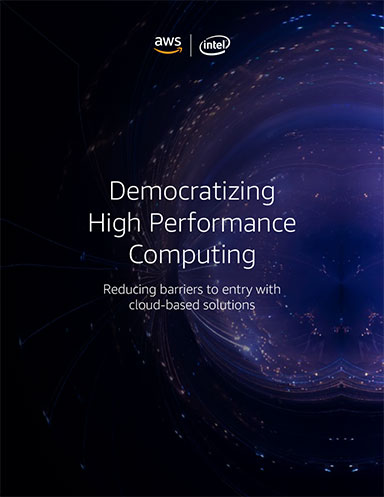AMD Powers Fast Supercomputer, El Capitan
Also, IBM and AMD announce collaboration to deploy AMD Instinct MI300X accelerators as a service on IBM Cloud, according to AMD.

El Capitan, powered by the AMD Instinct MI300A APU, becomes the second AMD supercomputer to surpass the Exascale barrier, according to AMD. Image courtesy of AMD.
Latest News
November 21, 2024
AMD showcases its ongoing high-performance computing (HPC) capabilities at Supercomputing 2024 by powering a fast supercomputer for the sixth straight Top500 list.
The El Capitan supercomputer, housed at Lawrence Livermore National Laboratory (LLNL), powered by AMD Instinct MI300A APUs and built by Hewlett Packard Enterprise (HPE), is recognized as a fast supercomputer with a High-Performance Linpack (HPL) score of 1.742 exaflops based on the latest Top500 list. Both El Capitan and the Frontier system at Oak Ridge National Lab claimed numbers 18 and 22, respectively, on the Green500 list, showing the capabilities of the AMD EPYC processors and AMD Instinct GPUs for energy efficiency for HPC workloads.
“Showcasing the incredible performance and efficiency of the AMD Instinct MI300 APUs, this groundbreaking machine is a testament to the dedicated work between AMD, LLNL and HPE,” says Forrest Norrod, executive vice president and general manager, AMD.
“El Capitan is crucial to the National Nuclear Security Administration’s core mission and significantly bolsters our ability to perform large ensembles of high-fidelity 3D simulations that address the intricate scientific challenges facing the mission,” says Rob Neely, director of LLNL’s Advanced Simulation and Computing program.
Bronis R. de Supinski, LLNL’s chief technology officer for Livermore Computing adds, “Leveraging the AMD Instinct MI300A APUs, we've built a system that was once unimaginable, pushing the absolute boundaries of computational performance while maintaining exceptional energy efficiency. With AI becoming increasingly prevalent in our field, El Capitan allows us to integrate AI with our traditional simulation and modeling workloads, opening new avenues for discovery across various scientific disciplines.”
More on El Capitan
El Capitan touted as the first exascale-class machine for the National Nuclear Security Administration (NNSA) stands as a computing resource for the NNSA Tri-Labs — LLNL, Los Alamos and Sandia National Laboratories. It will be used to advance scientific discovery and national security, providing the computational power to ensure the safety and security of the nation's nuclear deterrent without testing. This system enables modeling and simulation capabilities for NNSA’s Stockpile Stewardship Program that certifies the aging nuclear stockpile, and other nuclear security missions.
LLNL and the other NNSA Tri-Labs are also using El Capitan and its companion system, Tuolumne, to drive AI and machine learning-assisted data analysis. El Capitan will apply AI to high energy density problems such as inertial confinement fusion research, while Tuolumne will be used for unclassified open science applications including climate modeling, biosecurity/drug discovery, and earthquake modeling.
Beyond El Capitan, AMD and HPE also power what is reported to be the first exascale supercomputer, Frontier. Housed at Oak Ridge National Lab and powered by AMD EPYC CPUs and AMD Instinct GPUs. Frontier continues to enable researchers to tackle complex scientific problems, from climate modeling and biomedical research to training large language models.
Other News
In related news, IBM and AMD have announced a collaboration to deploy AMD Instinct MI300X accelerators as a service on IBM Cloud. This offering, expected to be available in the first half of 2025, aims to enhance performance and power efficiency for Gen AI models such as HPC applications for enterprise clients. The collaboration will also enable support for AMD Instinct MI300X accelerators within IBM’s watsonx AI and data platform, as well as Red Hat Enterprise Linux AI inferencing support.
In other news, AMD Instinct MI300A APUs will also power a next-generation supercomputer system for Japan’s National Institutes for Quantum Science and Technology (QST). The system, built by NEC Corp., will use 280 AMD Instinct MI300A APUs to drive AI and scientific research for the National Institutes for Quantum Science and Technology, and the National Institute for Fusion Science.
Visit the AMD booth #2731 at Supercomputing 2024 to learn more about AMD solutions for HPC and speak with AMD experts.
Sources: Press materials received from the company and additional information gleaned from the company’s website.
More AMD Coverage

More IBM Coverage
Subscribe to our FREE magazine, FREE email newsletters or both!
Latest News
About the Author
DE’s editors contribute news and new product announcements to Digital Engineering.
Press releases may be sent to them via [email protected].







